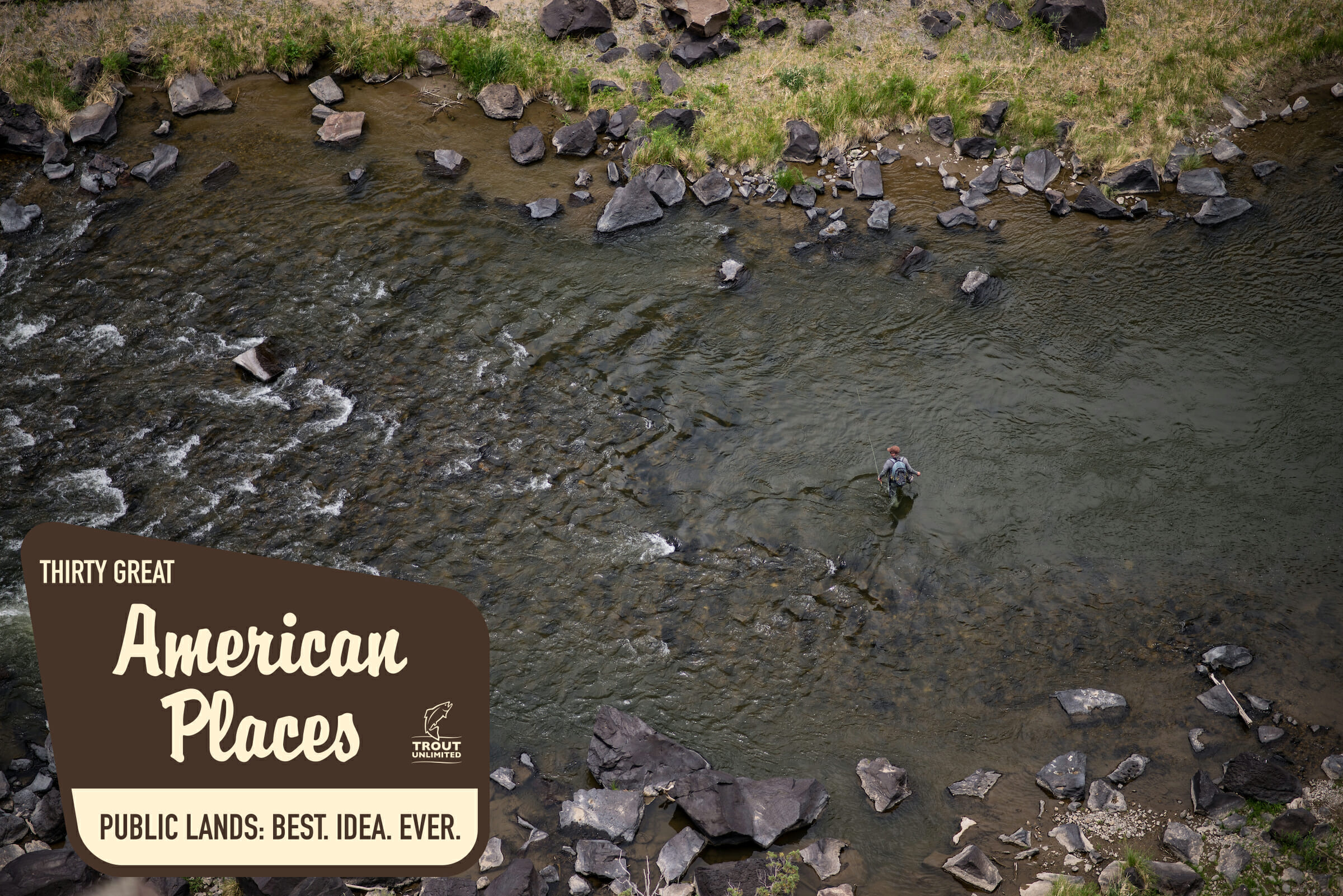Region: Southern Rockies
Activities: Hiking, fishing, rafting, hunting, mountain biking, camping
Species: Rainbow and brown trout
Where: The Rio Grande Del Norte National Monument is a swath of more than 240,000 acres of protected public land in Taos County, in north central New Mexico. Much of the land abuts about 50 miles of its eponymous river. The high desert here hosts a variety of habitats, from sagebrush plains to pine-forested mountains; it’s dotted by several steep volcanic cones (including Ute Mountain, at 10,093 feet) and anchored by the awe-inspiring Rio Grande Gorge, and 800 foot deep rent in the rugged terrain. The Monuments’ two main rivers – the Rio Grande and the Red – were among the first eight rivers Congress designated as National Wild and Scenic Rivers.
Why: Excellent angling against a stunning backdrop. “I’ve fished many places around the world and I’d put the Rio Grande in the monument up there with the best of them.” said Toner Mitchell, New Mexico Public Lands Coordinator. “You won’t find crowds down in the gorge, as it’s a demanding mile-long hike down and an even tougher walk out. I fish mainly nymphs, bank to bank; dries work in water up to thigh deep. The bigger rainbows are in faster water; browns can be found everywhere else. You know when you hook a rainbow, they’re as hot as can be. The Red River is a smaller version of the Rio Grande, with big boulders and gnarly waters. It fishes consistently throughout the year.”
The Rio Chama and Conejos River, not far outside the Monument, are also fine fisheries.
Local Knowledge: Don’t go too light on tippet. “I try to get away with 3x as my lightest tippet,” Mitchell explained. “There are many boulders and strong currents, so you really can’t follow big rainbows too easily without risking injury. I feel good if I land two out of five big fish.”
TU Initiatives: TU worked for years alongside local communities to secure the designation of the Rio Grande Del Norte as a national monument. The monument showcases how conservation-oriented public land stewardship can foster economic opportunities for rural residents. According to the New Mexico Green Chamber of Commerce, gross receipts for accommodations and food service in the nearby town of Taos increased in the first six months of the monuments designation, while lodger’s tax revenue soared 21 percent. TU has also been active in efforts to recover native Rio Grande cutthroat, which are found in the upper reaches of the basin’s rivers.
Make a difference: Take Action today to protect public lands like Rio Grande del Norte National Monument. Visit Standup.tu.org to tell decision makers that you oppose proposals that would weaken the Antiquities Act or rescind or diminish any national monuments



